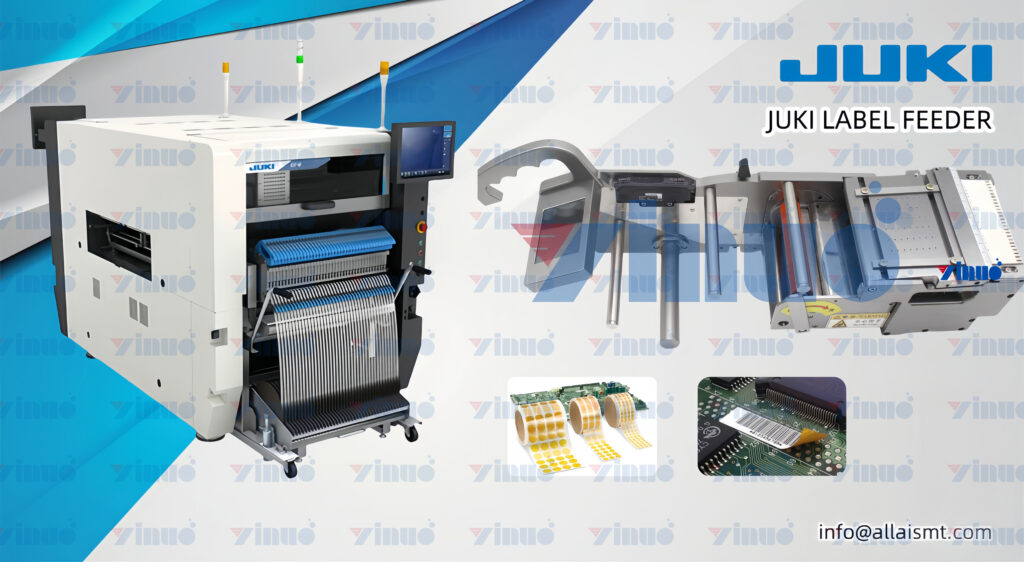Label Feeders: Ensuring the Consistency of Age Warning Labels
In the toy industry, the accurate and consistent application of age warning labels is crucial for consumer safety and regulatory compliance. These labels, which inform parents and caregivers about the appropriate age range for a toy and potential hazards like small parts or choking risks, are a vital part of toy packaging. Ensuring that these labels are consistently and correctly applied is essential to avoid miscommunication that could lead to harm or legal issues.
Label feeders offer an automated solution for applying age warning labels with precision and consistency, minimizing the risk of human error and ensuring compliance with safety regulations. Below are the key benefits of using label feeders for the application of age warning labels in the toy industry.
1. Regulatory Compliance
In many countries, toys are subject to strict regulations that dictate the inclusion and placement of age warning labels. For example, the European Union’s Toy Safety Directive and the United States’ Consumer Product Safety Improvement Act (CPSIA) require manufacturers to display clear age warnings on toy packaging. Failure to comply with these regulations can result in fines, recalls, or legal liability.
Label feeders help toy manufacturers meet these regulatory requirements by automating the application of age warning labels. This automation ensures that the labels are placed in the correct location on the packaging and are always legible, helping companies maintain compliance and avoid costly penalties.
2. Consistent Label Placement
Manual application of labels can result in inconsistencies, such as labels being placed in the wrong position or applied at an angle. These placement errors can make age warning labels difficult to read, diminishing their effectiveness and potentially leading to safety risks. Label feeders address this issue by applying labels in the exact same position on every package, ensuring that the labels are always visible and easy to read.
This consistency is particularly important for age warning labels, as they provide critical safety information that must be readily accessible to consumers. Automated label feeders eliminate the variability of manual application, ensuring that every toy package adheres to strict labeling standards.
3. Reduced Human Error
Human error is one of the leading causes of misapplied or missing labels in the packaging process. Manual labeling can result in mistakes such as applying the wrong label, omitting labels entirely, or misplacing them on the packaging. Label feeders automate the labeling process, reducing the potential for human error and ensuring that every toy package is labeled correctly with the appropriate age warning.
By minimizing human error, label feeders not only enhance safety but also improve overall efficiency in the packaging process. This allows toy manufacturers to maintain high standards of quality while reducing the risk of mistakes that could lead to consumer harm or regulatory violations.
4. High-Speed Production with Accuracy
In the fast-paced toy manufacturing industry, speed and efficiency are essential. Label feeders allow manufacturers to label products quickly without sacrificing accuracy. Automated label feeders can apply thousands of labels per hour with precision, ensuring that age warning labels are consistently applied even in high-volume production environments.
This capability is particularly valuable during peak production periods, such as before the holiday season, when toy manufacturers must meet increased demand without compromising safety or compliance. Label feeders ensure that age warning labels are applied accurately and efficiently, helping manufacturers keep up with production while maintaining compliance with safety standards.
5. Durability and Reliability of Labels
Label feeders help ensure that age warning labels are applied securely to toy packaging, reducing the risk of labels peeling off, becoming damaged, or fading over time. This durability is important for maintaining the visibility and legibility of age warnings, even after the product has been handled during shipping, storage, or while on store shelves.
Some label feeders are designed to work with specialized label materials that are resistant to moisture, heat, and wear, ensuring that age warning labels remain intact and legible throughout the product’s lifecycle. This reliability further enhances consumer safety by ensuring that critical safety information remains accessible.
6. Improved Branding and Consumer Trust
Consistency in labeling, particularly with age warnings, contributes to a company’s brand reputation and consumer trust. When parents and caregivers can clearly see and rely on accurate age warning labels, they are more likely to trust the product and the brand behind it. Label feeders ensure that age warnings are not only consistently placed but also visually aligned with the overall packaging design, creating a professional and reliable appearance.
By ensuring that safety labels are correctly and consistently applied, toy manufacturers demonstrate their commitment to product safety, which can enhance their brand’s reputation and build stronger consumer trust.
Conclusion
Label feeders provide an essential solution for ensuring the consistency and accuracy of age warning labels in toy packaging. By automating the labeling process, these machines help toy manufacturers meet regulatory requirements, reduce human error, and maintain high standards of safety and efficiency. In a highly regulated industry where consumer safety is paramount, label feeders play a critical role in delivering peace of mind to both manufacturers and consumers.

